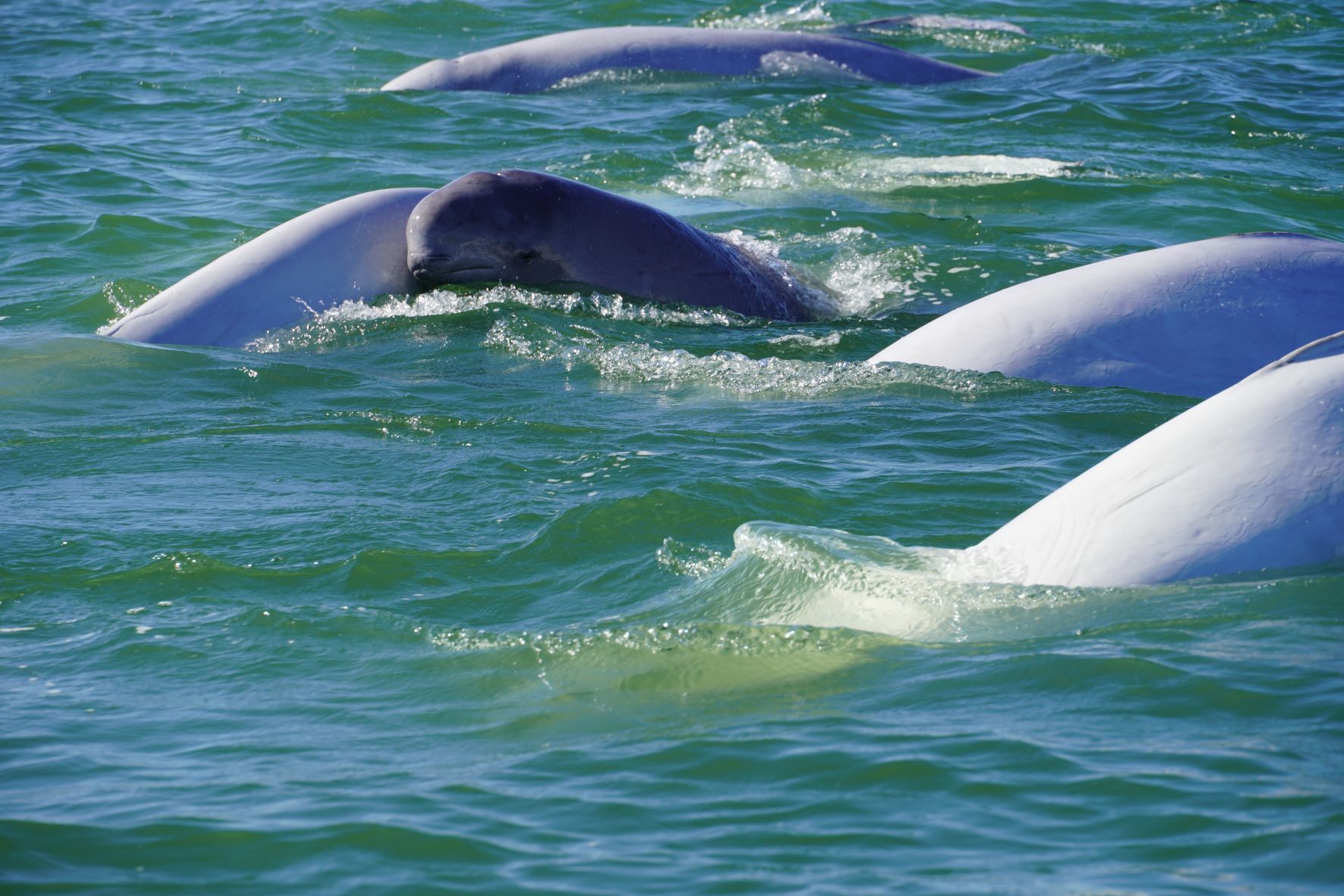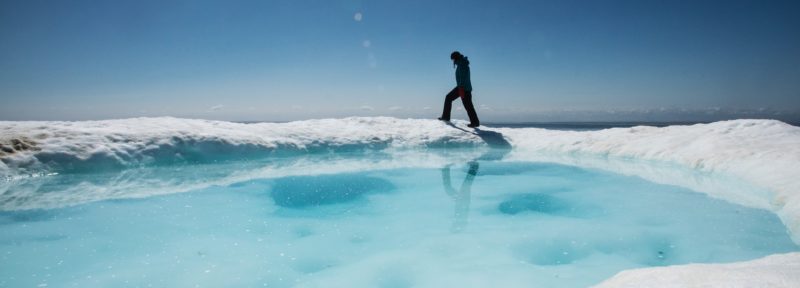New Study Finds Manitoba’s Seal River Estuary May Be Important Nursery for Beluga Calves
Credit: Paul Labun / Oceans North
New research about beluga habitat in Western Hudson Bay has found that beluga calves gather much more densely in the Seal River estuary than in the Churchill River estuary. The study also found that, unlike in other regions, the whales were not segregated by age or sex in either estuary.
Both of these findings were unexpected and reinforce the need to protect Western Hudson Bay, where an estimated one-third of the world’s belugas migrate each summer.
“The most interesting part of the research is that it shows the Seal River may be a nursery for belugas,” said Dr. Kristin Westdal, Oceans North’s science director and a co-author of the new study published this month. “And all ages of belugas mixed throughout both estuaries. That makes this extremely valuable habitat.”
Belugas demonstrate high levels of “site fidelity,” meaning they return to the same places year after year. In winter, beluga whales live in offshore areas with dense pack ice. But in the summer, around 55,000 of them travel to Western Hudson Bay, migrating more than 2,000 kilometres round trip to give birth, raise their offspring and forage for food. As the Arctic changes and belugas face threats from melting sea ice, increased predation by killer whales, and industrial development, it’s more important than ever to protect the places where belugas gather and rear their young. That’s one of the reasons why Oceans North has long supported the creation of a national marine conservation area in Western Hudson Bay.
Belugas in other regions, such as the Beaufort Sea, have been found to segregate by age, with older males foraging in different places than juveniles and females with calves. But this study found that all ages of belugas lived together in the shallow waters of both the Seal and Churchill river estuaries. This behaviour could not be attributed to environmental factors such as sea surface temperature, water depths or distance from shore, but scientists believe it could be related to the fact that belugas are very social by nature.
The study, published in PLOS ONE, examined aerial photos of 13,538 belugas in the Seal and Churchill river estuaries taken during a Fisheries and Oceans Canada population survey in 2015. Between four and seven percent of the belugas in both regions were calves. Calves can be identified by their size and colour: they are 30 to 50 percent smaller than adults and brownish grey, while juveniles are grey and 50 to 75 percent the size of the white adults.
The vast majority of the belugas surveyed—a total of 12,265—were found in the Seal River estuary, where more than 2,000 whales were counted in one half-kilometre square grid. The density of calves was also three times higher there than in the Churchill estuary. A total of 521 calves were identified in the Seal estuary compared to only 70 in the Churchill.
“They’re clearly congregating in places where the rivers and ocean meet, which means we need to protect both upstream and marine coastal habitat,” said Westdal. “This gives us a better idea of what marine conservation should look like in this area.”
The other two co-authors on the study were Jeremy Davies, a marine spatial expert with Ocean Conservancy, and Dr. Steve Ferguson, a University of Manitoba professor and research scientist at Fisheries and Oceans Canada.
If you’d like to learn more about the belugas of Western Hudson Bay and the efforts being taken to protect this region, check out “The Great Beluga Migration,” an episode of our podcast, The Ocean Project.
Ruth Teichroeb is a regular contributor to Oceans North and is former communications director. She is based in Seattle, Washington.





